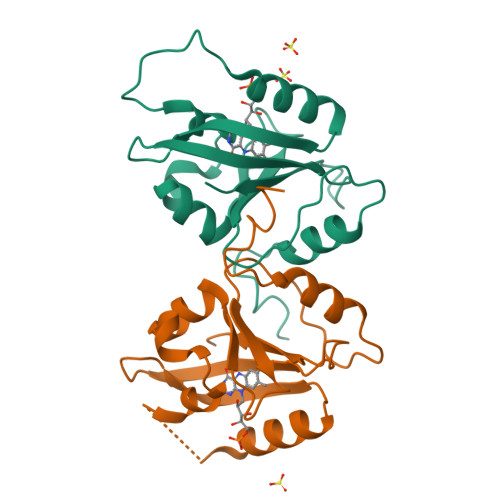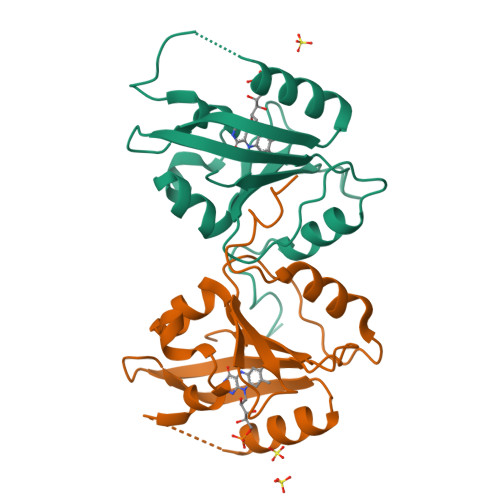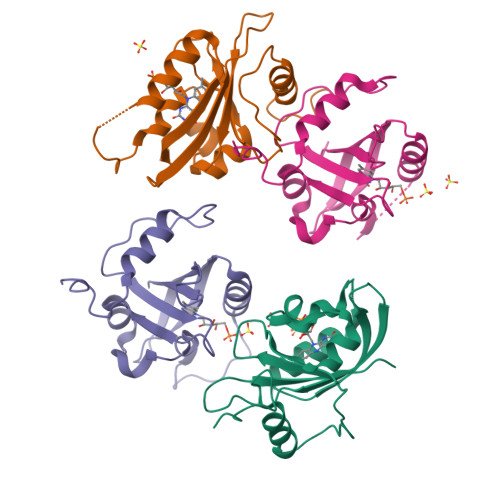Structural Biochemistry of a Fungal LOV Domain Photoreceptor Reveals an Evolutionarily Conserved Pathway Integrating Light and Oxidative Stress.
Lokhandwala, J., Hopkins, H.C., Rodriguez-Iglesias, A., Dattenbock, C., Schmoll, M., Zoltowski, B.D.(2015) Structure 23: 116-125
- PubMed: 25533487
- DOI: https://doi.org/10.1016/j.str.2014.10.020
- Primary Citation of Related Structures:
4WUJ - PubMed Abstract:
Fungal LOV proteins facilitate photoadaptation via blue light regulation of dimer formation. Despite considerable homology of these proteins in closely related fungi, deviations in signaling exist. Here we report the crystal structure of ENVOY (ENV1), a homolog of N. crassa VVD in the fungus T. reesei, a model organism for plant cell wall degradation. Structural studies contradict a model of reversible competitive dimerization. Rather, evolutionary pressures have facilitated a two-residue shift in the position of a key Cys residue (Cys96) that enables the integration of environmental stress and light responses. A Cys96Thr variant abolishes adaptive responses to light and oxidative stress in a carbon source-dependent manner in vivo. Phylogenetic analysis verifies an evolutionary relevance of the Cys residue shift in different orders within Sordariomycetes. In this manner, we identified a widespread oxidative stress signaling mechanism that couples metabolic sensing and blue light responses not previously identified in LOV proteins.
Organizational Affiliation:
Department of Chemistry, Southern Methodist University, Dallas, TX 75275, USA.






















